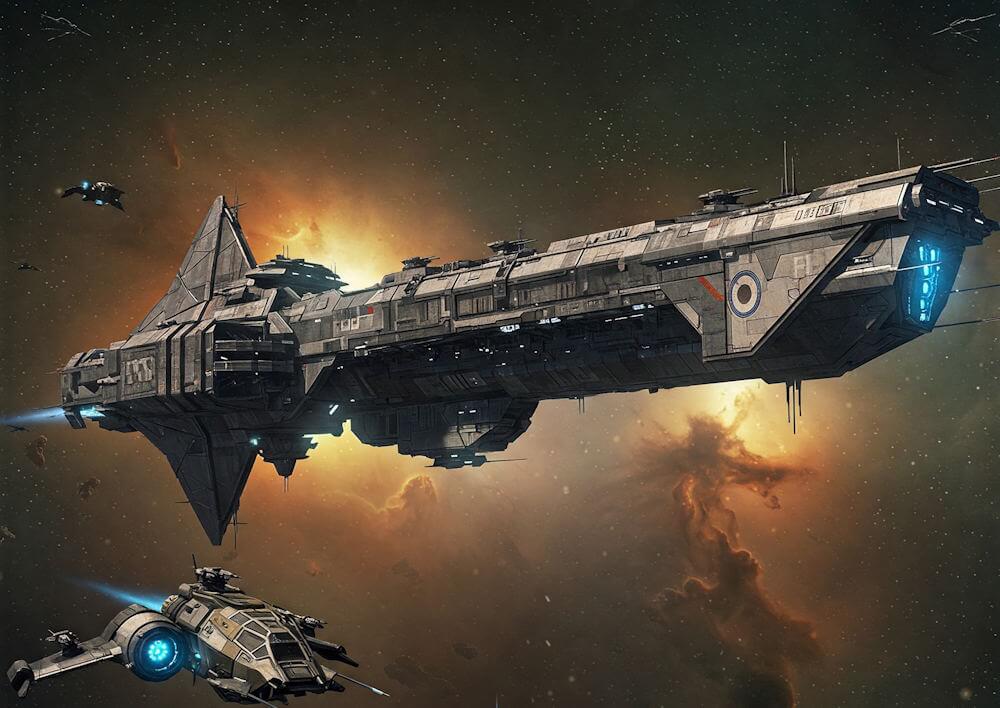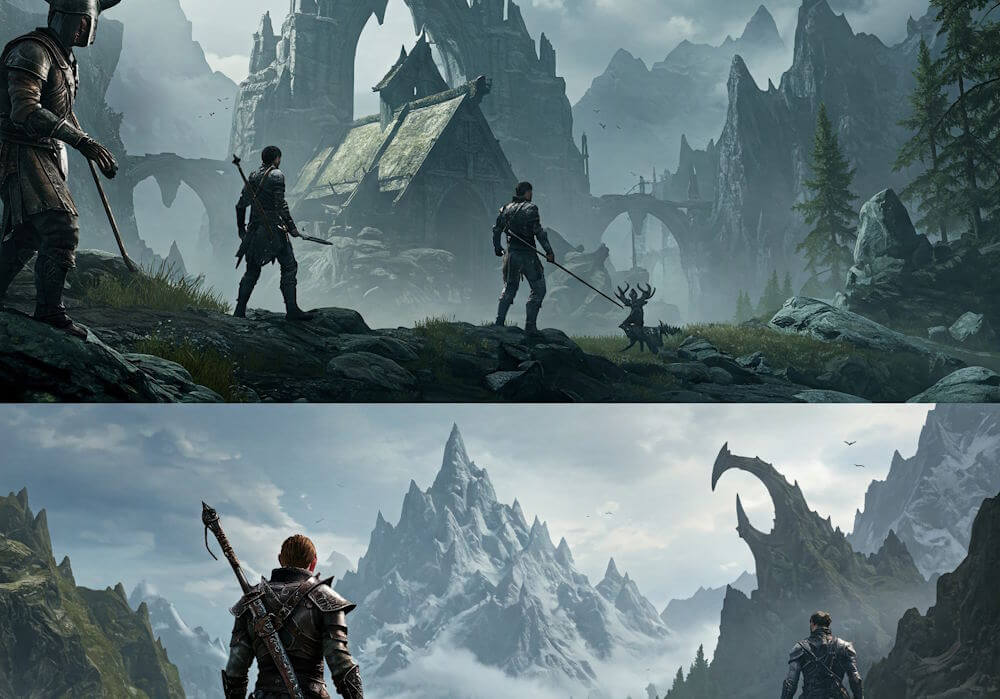Suicide Squad: Kill the Justice League is an action-adventure video game developed by Rocksteady Studios, known for their acclaimed Batman: Arkham series. Set within the vast and rich tapestry of the DC Universe, the game plunges players into a narrative fueled by familiar characters and a compelling premise. The storyline revolves around a nefarious scheme that leads to the Justice League members succumbing to mind control, transforming them into formidable adversaries. Consequently, players assume the roles of iconic anti-heroes from the Suicide Squad, such as Harley Quinn, Deadshot, Captain Boomerang, and King Shark, as they navigate a chaotic and open-world Metropolis aimed not just at stopping the Justice League but ultimately saving them from their malevolent fate.
The game’s development has been a topic of anticipation and speculation among fans, having been officially announced during the DC FanDome event in August 2020, providing a glimpse into Rocksteady’s fresh take on the iconic Suicide Squad. The distinctive mechanics promise fluid co-op gameplay, allowing multiple players to join forces or engage in single-player modes while switching between characters, each with their unique abilities and gameplay styles. This versatility is central to the gameplay experience, emphasizing collaboration and strategy as players face both familiar foes and the transformed members of the Justice League.
As the Suicide Squad seeks to save the world from a threat that they themselves grapple with, the game highlights intricate character dynamics intertwined with action-packed narratives. Positioned within a universe where morally ambiguous choices prevail, this title raises engaging questions about heroism, villainy, and redemption. With expectations set high among the gaming community, the release in 2024 will be pivotal in determining its reception and impact. As we delve deeper into the game’s features and public response, the balance of gameplay and storytelling will remain central to its ultimate success.
Gameplay Mechanics and Features
In “Suicide Squad: Kill the Justice League,” players are introduced to a diverse range of gameplay mechanics that significantly influence the user experience. Central to the game’s appeal is its combat system, which seamlessly integrates a variety of abilities unique to each character in the squad. Players can switch between characters such as Harley Quinn, Deadshot, Captain Boomerang, and King Shark, each providing a distinct set of skills that cater to different playstyles. This variety enhances the gameplay by allowing players to strategize and adapt their approach depending on the challenges they face within the game environment.
The mechanics are designed to be fluid and engaging, with a strong emphasis on cooperative multiplayer features. Teams can collaborate to execute powerful combos and special moves, fostering a sense of teamwork that is essential in overcoming tougher enemies and objectives. This cooperative nature is complemented by an online multiplayer mode, promoting collaboration and interaction among players. This feature allows friends to team up, making the experience not only more social but also introducing new layers to strategic gameplay.
When evaluating the user experience, it’s worth comparing “Suicide Squad: Kill the Justice League” to other titles in the action-adventure genre, such as “Marvel’s Avengers.” While both games emphasize character abilities and cooperative play, “Suicide Squad” distinguishes itself with its unique blend of humor, narrative depth, and stylized graphics. The game’s world is richly designed, drawing players into the chaotic and vibrant atmosphere of Metropolis, which is under siege. However, it is crucial to note that while some players may find the character-switching dynamic highly engaging, others might perceive it as a lack of character depth or immersion. Critically, these gameplay mechanics define the overall interaction players have with the game, setting it apart from its contemporaries.
Visuals and Art Style
The visual presentation in “Suicide Squad: Kill the Justice League” plays an integral role in defining the overall experience of the game. The artistic direction blends a comic-book aesthetic with modern gaming technology, resulting in a vibrant and dynamic visual environment. Character design is a standout aspect of this title; each member of the Suicide Squad is meticulously crafted. Their appearances reflect both their personalities and backgrounds, enhancing player identification with these characters. The graphics utilize bold colors and exaggerated proportions, reminiscent of classic comic book illustrations, allowing the characters to stand out against the often chaotic backdrops of Metropolis.
Additionally, the environmental graphics further enhance the immersion players experience while navigating through the game. The city of Metropolis is depicted with impressive detail and scale, featuring a mixture of familiar landmarks and creative elements that evoke a sense of place within the DC Universe. The developers have managed to create an environment that feels alive and is constantly changing, keeping players engaged as they explore urban landscapes filled with interactive elements and enemies.
The animation quality in “Kill the Justice League” contributes significantly to the gameplay mechanics. Smooth and fluid animations, especially during combat sequences, provide a sense of responsiveness and dynamism that is critical in action-oriented titles. The visual effects during character special moves and attacks are stunning, enveloping the screen in a visually appealing cacophony that further immerses the player in the gameplay experience. This artistic harmony between character movement and environmental interaction deepens the player’s connection to the narrative by visually reinforcing the stakes of their actions.
Ultimately, the visuals and art style in “Suicide Squad: Kill the Justice League” not only serve to embellish the gaming experience but also act as a pivotal component in storytelling, enhancing player immersion in a rich, comic-inspired world.
Storyline and Character Development
The storyline of Suicide Squad: Kill the Justice League delves into an intriguing narrative that centers on a formidable adversary: the Justice League. Faced with an unprecedented challenge, the Suicide Squad—comprised of notorious anti-heroes—must confront their former defenders, who have been corrupted and transformed into formidable threats. This premise sets up a chaotic yet engaging conflict that draws players into a world where morality is blurred and the lines between heroism and villainy are redefining themselves.
One of the core themes of the game is the struggle for redemption. Each member of the Suicide Squad is a villain with a complex past, grappling with their identities while facing not only external threats but also internal conflicts. The development of characters such as Harley Quinn, Deadshot, and Captain Boomerang is pivotal, as players witness their evolution from misfits to reluctant heroes. The interactions between these characters are often laced with humor, contrasted with the gravity of their mission, creating a dynamic that resonates with fans of the franchise.
As the storyline progresses, players experience the intricacies of each character’s backstory and motivations, enhancing the depth of the narrative. However, the game is not without its flaws. Some have criticized the pacing and structure of the plot, suggesting that certain character arcs may feel rushed or underdeveloped, particularly as the narrative shifts focus between the Squad and their Justice League counterparts. Despite these potential weaknesses, the overall narrative strength lies in its ability to present complex characters in morally ambiguous situations, allowing players ample opportunity to explore their motivations and growth throughout the game.
Ultimately, the storyline of Suicide Squad: Kill the Justice League offers an engaging mixture of action, humor, and character development that reflects the chaotic essence of its titular squad while challenging players to confront the realities of both good and evil.
Reception and Critique from Players and Critics
Since its release, “Suicide Squad: Kill the Justice League” has elicited a wide range of responses from both players and critics alike. The initial excitement surrounding the game anticipated a unique blend of action and narrative, set within the expansive universe of DC Comics. Critics, in their reviews, have often highlighted the game’s visually appealing graphics and engaging character designs, which resonate well with the franchise’s aesthetic appeal. The depiction of notable characters such as Harley Quinn, Deadshot, Captain Boomerang, and King Shark has been received positively, with many noting the depth infused into their personalities.
However, not all feedback has been favorable. Some critics expressed concerns regarding gameplay mechanics and a perceived lack of innovation in the overall design. Several reviews pointed out repetitive mission structures and an over reliance on cooperative multiplayer elements, which some players found detracted from the single-player experience. The game’s narrative, although entertaining, has been critiqued for not living up to its ambitious premise, leading to a mixed reception in this regard.
User reviews reflect this polarity. While many players enjoyed teaming up with iconic villains to take on members of the Justice League, others voiced frustration over various technical issues and gameplay balance, which led to an overall average rating across platforms. A significant trend observed in feedback is the desire for more content and variety, particularly in terms of mission types and environmental interaction. Despite the criticisms, a core group of fans has embraced the game for its unique premise and engaging characters.
Ultimately, “Suicide Squad: Kill the Justice League” presents a division in the gaming community. Its praise for character design and aesthetic does not overshadow the critiques regarding gameplay mechanics and narrative coherence, resulting in a balanced yet complex reception.
Comparative Analysis: Other DC Games
‘Suicide Squad: Kill the Justice League’ is a significant entry in the vast universe of DC video games, making comparison with its predecessors, such as the ‘Batman: Arkham’ series and ‘Injustice’, essential to gauge its standing. The ‘Batman: Arkham’ series, developed by Rocksteady Studios, set a high standard for superhero video games, renowned for its rich storytelling, immersive gameplay, and character development. In contrast, ‘Injustice’ primarily focuses on competitive fighting, presenting a unique narrative centered around an alternate reality where heroes clash due to moral convictions.
When analyzing gameplay mechanics, ‘Kill the Justice League’ incorporates a blend of cooperative multiplayer elements and open-world exploration, distinguishing itself from the predominantly single-player ‘Arkham’ experience. This shift towards multiplayer dynamics could foster enhanced engagement and replayability, appealing to a contemporary audience that increasingly favors cooperative gaming experiences. However, whether this approach will resonate with long-time fans of the Arkham series, who appreciate its deep narratives and character-driven gameplay, remains to be seen.
Storyline and character fidelity are central to assessing ‘Suicide Squad: Kill the Justice League’ against its counterparts. The Arkham series is lauded for its profound narrative arc that pays homage to the Batman lore while fleshing out supporting characters, maintaining fidelity to their comic origins. In contrast, ‘Kill the Justice League’ revolves around a different narrative premise, focusing on antiheroes tasked with defeating the Justice League. This premise offers fresh narrative potential, yet could face scrutiny regarding character representation, a critical aspect fans expect in DC gaming.
Lastly, fan engagement plays a crucial role in determining the success of any video game. The anticipation surrounding ‘Kill the Justice League’ indicates a vibrant community eager for its release. Nevertheless, maintaining support post-launch through updates, expansions, or community interaction will be essential for it to carve out a lasting legacy similar to the ‘Batman: Arkham’ and ‘Injustice’ titles.
Community Engagement and Fan Reactions
The launch of “Suicide Squad: Kill the Justice League” has sparked a vibrant discussion within the gaming community. Fans have taken to various social media platforms such as Twitter, Reddit, and Instagram to express their opinions, share thoughts, and engage in conversations about the game. The diverse and passionate reactions demonstrate the enthusiasm surrounding the game, as fans dissect the narrative and gameplay elements that define their experience.
One prevalent aspect of community engagement has been the formation of theories regarding the story and character arcs. Many fans speculate about plot twists involving the Justice League members, driven by the iconic lore and character relationships within the DC universe. These discussions often lead to heightened engagement, as fans revisit classic comic book storylines to predict potential outcomes in “Suicide Squad: Kill the Justice League.” Creative dialogues among fans effectively enhance the overall gaming experience by fostering a community centered around shared interests.
In addition to engaging in dialogue, fans are also expressing their creativity through fan art and user-generated content. This practice has become a hallmark of modern gaming culture, and “Suicide Squad: Kill the Justice League” is no exception. Artists have depicted their favorite characters in various styles, contributing to a rich tapestry of visual interpretations while sharing their work on platforms like DeviantArt and Tumblr. These shared creations are instrumental in building a community that not only consumes content but actively participates in shaping its ecosystem.
Community events have further amplified the excitement around the game. Online tournaments, cooperative play sessions, and fan meetups allow enthusiasts to connect and celebrate their shared passion. These events foster camaraderie, inviting new players to explore the game while reinforcing connections among devoted fans. Through these community-driven efforts, “Suicide Squad: Kill the Justice League” demonstrates its ability to cultivate a dedicated following, showcasing the unique power of collaborative enthusiasm within the gaming landscape.
Possible Future Directions for the Franchise
The release of “Suicide Squad: Kill the Justice League” has generated significant attention, and its reception could dictate potential future directions for the franchise. With a focus on the Suicide Squad’s unique blend of humor, action, and complex characters, future developments may explore various pathways to extend the gaming experience. If the game performs well, we could anticipate sequels that further delve into the DC Universe, perhaps introducing new members to the Squad or expanding the narrative to include other iconic characters from the DC pantheon.
Moreover, with the rising trend of cross-platform gaming and ongoing interest in the comic book genre, adaptations of “Suicide Squad” into other forms of media are plausible. Animated series or live-action interpretations could provide fans with additional layers to the story, enhancing character arcs in ways that a single video game might not achieve. Given the cinematic success of the Suicide Squad in film, synergistic opportunities may arise, allowing for collaborations between game developers and filmmakers to create cohesive storytelling experiences across multiple formats.
Furthermore, expansions to the game itself could also be on the horizon. Utilizing downloadable content (DLC) to introduce new missions, characters, and gameplay mechanics could keep the player base engaged and extend the game’s longevity. Seasonal events or themed updates may also draw players back to the game, promoting continuous interaction with its rich storyline. Additionally, an interactive engagement with players through community feedback could guide developers in tailoring future updates, ensuring that content resonates with fans.
In summary, depending on the reception of “Suicide Squad: Kill the Justice League,” the franchise could significantly expand beyond its initial offering, exploring sequels, adaptations, and ongoing content updates that leverage the popularity of the Suicide Squad within the DC Universe.
Final Thoughts: Hit or Miss?
As we delve into the analysis of “Suicide Squad: Kill the Justice League,” it is essential to reflect on the multifaceted nature of the game. Various aspects have been explored, showcasing both strengths and weaknesses. On one hand, the game offers players a unique gameplay experience by integrating beloved characters from the DC universe. The vibrant graphics and dynamic combat mechanics stand out, enticing players with the promise of engaging action. The character-driven narratives provide depth, allowing players to form connections with the squad while unveiling intriguing story arcs.
However, potential pitfalls cannot be overlooked. The game has faced criticism regarding repetitive gameplay elements and potential imbalance in character abilities. This notion raises concerns about long-term engagement, as players might feel stifled by a lack of variety. Furthermore, the overarching storyline checks the box for creative inclusion of notable Justice League figures, yet some players may perceive the execution as lacking gripping intensity. Thus, it is imperative to consider whether these drawbacks detract significantly from the overall enjoyment.
When weighing the pros and cons, it becomes evident that “Suicide Squad: Kill the Justice League” possesses both appealing features and inherent flaws. For dedicated fans of the DC franchise, the opportunity to control iconic anti-heroes presents an undeniable allure. Conversely, those seeking innovation in gameplay may find some aspects lacking in freshness. Ultimately, this leads to the lingering question: is the game a hit or a miss? The answer may ultimately hinge on individual preferences and expectations, reflecting the diverse opinions circulating within the gaming community. In summary, “Suicide Squad: Kill the Justice League” embodies a blend of excitement and potential shortcomings, making it a topic of ongoing debate among its audience.




